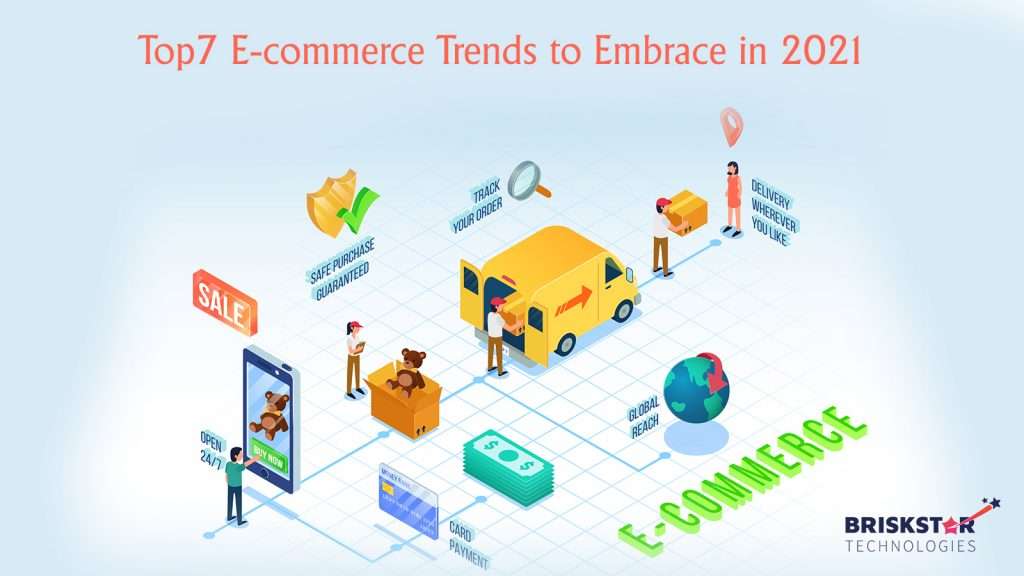Top7 E-commerce Trends to Embrace in 2021
1. Google Shopping Ads
Google Shopping ads can help your online store succeed in 2021. Shopping ads are data-rich listings of products sold by businesses. They consist of a title, a description, the price of the product, the name of the business that’s selling the product, an image, and customer reviews. Google displays Shopping ads within its search results pages and its “Shopping” tab.
In 2020, Google announced that it would no longer require businesses to pay for Shopping ads. It still offers paid Shopping ads, but Google now offers free Shopping ads as well. You can create free Shopping ads by linking your Google Ads account to your Merchant Centre account. To learn more about free Shopping ads, visit support.google.com/merchants/answer/9838672?hl=en. Whether they drive 10 or 1,000 new sales to your online store, you won’t incur advertising costs with free Shopping ads.
2. Dynamic Pricing
Another e-commerce trend to embrace in 2021 is dynamic pricing. It’s not uncommon for online stores to change the prices of their products. If a competitor lowers the price of a product, an online store selling the same product may follow suit. Alternatively, if an online store experiences strong demand for a particular product, it may raise the price of that product.
Rather than manually changing your online store’s prices, however, you can use dynamic pricing. Dynamic pricing is powered by software that automatically adjusts product prices in real-time based on factors such as supply, demand, competition. A report published by Econsultancy indicates that dynamic pricing increases profit margins for online stores by an average of 10 percent.
3. Personalization
Most consumers today want a personalized experience when shopping for products online. They don’t want to see the same products and content as everyone else. Rather, consumers want online stores to present them with personalized products and content.
According to Instapage, nearly six in 10 consumers say personalization has a positive impact on their purchasing decisions. Personalization involves matching products and content to your online store’s individual consumers. You can show product recommendations, for instance, based on consumers’ past purchases and search history. You can also send them personalized emails addressing consumers by their first name.
4. Chatbots
If your online store doesn’t already have one, you should give it a chatbot. Chatbots is an intelligent software application that simulates conversations with consumers. They typically appear in pop-up boxes. If a consumer needs help, he or she can seek it from a chatbot. The consumer can type his or her question in the pop-up box, after which the chatbot will respond in the same pop-up box.
A chatbot won’t eliminate the need for human support. Nonetheless, they offer a form of automated support by immediately addressing many consumers’ questions. Maybe a consumer wants to know about your online store’s return policy, or perhaps a consumer wants to know if your online store has a particular product in stock. A chatbot can answer these and other common questions.
5. Cryptocurrency Accepted
An increasing number of online stores now accept cryptocurrency. Bitcoin, for instance, is now accepted by several major online brands, including Overstock, New-egg, and Tiger-direct. Even smaller online brands have jumped on board the cryptocurrency bandwagon by allowing customers to pay with Bitcoin.
You should still accept traditional methods of payment, but don’t ignore the power of cryptocurrency. When compared to credit card payments, cryptocurrency payments have lower transaction fees. At the same time, cryptocurrency payments don’t carry the risk of charge-backs. When a customer pays using cryptocurrency, he or she won’t be able to reverse the transaction by initiating a chargeback.
6. Voice Shopping
Many consumers now search for products online using their voice. Voice shopping involves the use of a voice-controlled virtual assistant, such as Google Assistant or Amazon Alexa, to search the internet for products.
Virtual assistants come standard in all smart speakers and most smartphones. Using their device’s virtual assistant, consumers can easily research and compare products online before purchasing them. Optimizing your online store for voice shopping will help you connect these consumers and capture them as customers.
7. Omnichannel Marketing
Omnichannel marketing is a blazing-hot e-commerce trend. Online stores use it to improve their customer service and, thus, encourage loyalty. According to MacKenzie Corporation, businesses with strong omnichannel marketing have an average customer retention rate of 89 percent, compared to just 33 percent for those with a weak strategy.
Omnichannel marketing involves the use of multiple channels to engage consumers in an integrated manner. You can use push notifications, for instance, to engage consumers on mobile devices, and you can use Facebook Ads to engage them on social media. With omnichannel marketing, consumers can seamlessly interact with your online store through multiple channels.
Tags :
ecommerce business
ecommerce platforms
ecommerce trends
ecommerce website
![circle-shapes]()











